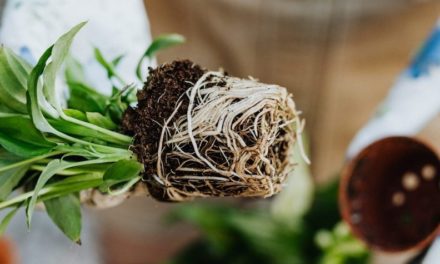
Carolyn Jirousek
By Carolyn Jirousek
The plan for Thanksgiving was to get an early start on the dessert I promised to bring to the family dinner that afternoon. The first step was to find my Death by Chocolate recipe in the kitchen cabinet where aging cookbooks, loose index cards, and faded clippings threatened to slide into my arms in escape from the chaos behind the door. The next challenge was rifling through a jumbled pantry for the cake and pudding mixes, then teasing out the spatula and whisk from an angry tangle of utensils that spontaneously generated in the drawer over time. My best-laid plans fell apart when I teetered on a kitchen chair to excavate the large glass bowl buried in the cabinet above the fridge. Rummaging through an assortment of vases and mismatched mugs, my grandmother’s cracked juice pitcher, and a jumble of wine glasses emblazoned with now defunct wineries and restaurants long shuttered, I found the bowl wrapped in a yellowed plastic bag. The bowl itself was filled with smaller bowls, vases, and pitchers. I was quickly overcome with the surge of dread that clutter brings on, heightened by the guilt of procrastination.
Decluttering has been on my To-Do lists for years. My recent 70th birthday has made the discomfort of clutter even more acute. Living in the same house for 40 years, and having lots of room for Stuff (with a capital S) of my own, our two grown sons, and my deceased parents, I am slowly suffocating. Medical research has shown that clutter is dangerous. It impedes concentration and increases cognitive overload, which takes up space in our working memory. Depression, anxiety, helplessness, and hopelessness set in. Clutter also makes it hard to keep the house clean as it provides havens for messy spiders and dust balls that catch the rays of the morning sun along the baseboards. Clutter blocks the flow of creative energy, undermines feng shui, and offers opportunities to goblins hiding under piles of papers and laundry to hide car keys and reading glasses.
A quick online search for decluttering shows many programs offering helpful tips and challenges. Examples are: The One Touch, where you deal with something immediately by putting it where it belongs or in the trash; The Rule of 5, a down and dirty procession from room to room to identify and toss five items per room; Project 333, in which youwear only 33 items of clothing for the next three months and see what you really need; The 12-12-12 Challenge, which requires you to pick 12 items to toss, 12 to donate, and 12 to return to their proper home; and The 3 Second Rule, where you give yourself three seconds to decide to keep or not to keep.
I was drawn to the website of Marie Kondo (konmari.com), a renowned tidying expert enchanted with organizing things since her childhood in Japan. She learned early that it was not so much discarding Stuff as looking for reasons to keep things. Her KonMari Method is based on one’s feeling as the standard for decision making. The key is to pick up each object and ask yourself, “Does this spark joy?” If so, keep it and the rest goes.
For myself, I am not sure if the “spark joy” concept helps. I do find joy in my piles of rocks and seashells, the pressed leaves that drift out of my books, shoe boxes of birthday cards, and crumbling albums dating back to the dawn of photography. From the sheer amount of this material, I should be beyond joyous and deep into the state of perpetual ecstasy. I am also a 70-year-old “snowbird” and have joyous Stuff in two places. I hear my late mother’s words when the burden of clutter closes in: “What are you going to do with all this Stuff when Daddy and I kick the bucket?” she’d say with a cruel chuckle. With that, my sister and I were left to disperse 60 years of Stuff, much of it valuable antiques and items of sentimental value. We chose what we wanted, then hired a liquidator to conduct an estate sale, which winnowed things down to the least desirable miscellany languishing in the basement and garage. For that we called 1-800-GOT-JUNK. My sister was reduced to tears when she followed the loaded trailer down the road and spotted the grandkids’ Raggedy Ann and Andy toy box rattling around in the final heap of detritus headed for who-knows-where.
I swore I would never do that to my kids, yet I remain paralyzed by procrastination. At least I have the energy to scroll online for the comfort of guidance and touching stories of kindred spirits in the same boat. But then I opened up an essay in Psychology Today, posted May 7, 2020, with the ominous title “Swedish Death-Cleaning in the Time of Corona.” The Guest Blogger was Margareta Magnusson of Stockholm, Sweden. Describing herself as an “85-year-old with reduced lung capacity who likes to dance a little too much,” she grabbed my full attention. She used pandemic isolation as the opportunity to engage in döstädning, the Swedish word for Death Cleaning. Magnusson introduced the topic in 2017 with her book, The Gentle Art of Swedish Death Cleaning: How to Free Yourself and Your Family from a Lifetime of Clutter. The idea is that “when we die we should not leave a mountain of crap behind us for our loved ones to clean up.” It is not about dying, but rather getting organized so you can enjoy what’s left of your life. Her strategies are similar to others I have seen, but her philosophy is motivating and she guides you with good humor.
Start with the basement or attic, where the most unnecessary items reside, or tackle clothing first. Work on categories by size: furniture, down to smaller things that fit in boxes. If friends or family admire an object, offer it to them on the spot, sending it on to a new life with someone who will appreciate it. What troubles me most are the personal and sentimental items that I am not ready to toss. For this, Magnusson suggests a box labeled “Throw Away.” When you are gone, it can simply be thrown out without having to be opened, no explanations needed on why these things were kept. I decided that neatly packed and labeled plastic bins can also be stored for disposal by someone else at another time if I just can’t do it myself.
Magnusson says to devote 30 minutes a day to Death Cleaning. “Reward yourself after every accomplishment: a nice coffee, a piece of cake, a warm shower… if you hit three hours of Death Cleaning, I would suggest a cold beer.” As for my lovely glass dessert bowl, my daughter-in-law’s eyes lit up when I placed it on her counter at Thanksgiving dinner. “Oh I’d love to claim that someday, not that I want it any time soon!” she said. I told her, “It’s yours!”, and went home to freshly uncluttered space above the fridge that is just the beginning of letting go!
Carolyn Jirousek grew up in Cleveland, Ohio. Dividing her time between Cleveland and Beaufort, she enjoys the best of both worlds. A retired RN and Art Historian, she is crazy about making music, dancing, writing, working out, and always taking time for Nature.









